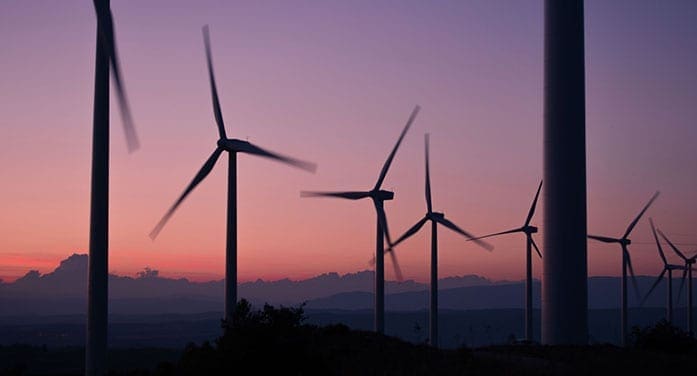 In a previous column I pointed out that since switching coal-fuelled power plants to natural gas cuts CO2 emissions in half, exporting liquefied natural gas (LNG) to displace coal benefits our economy and reduces global emissions.
In a previous column I pointed out that since switching coal-fuelled power plants to natural gas cuts CO2 emissions in half, exporting liquefied natural gas (LNG) to displace coal benefits our economy and reduces global emissions.
And that since converting gasoline and diesel-fuelled vehicles and ships to natural gas cuts emissions by 25 per cent, providing incentives to achieve that could substantially decrease domestic emissions, as well.
It’s not unusual for my columns to draw criticism but presenting a practical and achievable way of substantially reducing global greenhouse gas emissions seemed to me the least likely to do so.
I was wrong!
Criticisms of my columns typically fall into two categories. Those incapable of disputing the facts often resort to personal attacks. In this case, I was accused of writing a “propaganda piece for the fossil fuel industry.” I retired from the industry and disposed of all my investments in it 15 years ago. But if being an engineer with 30 years of experience in the energy industry is a sin, I plead guilty.
The second category of critics dispute the validity of my analysis. In this case, criticism focused on “fracked gas.”
 Much of our natural gas is locked in solid rock, requiring the creation of cracks (fractures, hence fracking) to allow it to flow to the well. Those fractures are created by injecting fluid, mostly water along with small amounts of vegetable oil, household cleansers and automotive anti-freeze, under high pressure.
Much of our natural gas is locked in solid rock, requiring the creation of cracks (fractures, hence fracking) to allow it to flow to the well. Those fractures are created by injecting fluid, mostly water along with small amounts of vegetable oil, household cleansers and automotive anti-freeze, under high pressure.
Anti-fossil-fuel zealots have coined the derogatory term “fracked gas,” falsely claiming it constitutes a health hazard to those who burn it. In fact, it’s made of the same methane molecule (CH4) as all other natural gas.
A more valid criticism is that leaks in production and transportation release methane, a potent greenhouse gas. But those emissions are minuscule compared to the environmental benefits of displacing higher emissions from coal and liquid fuels.
Raising issues about the environmental impact of gas production and transportation is certainly fair game. But what about the environmental impact of producing wind and solar energy?
A study by the Manhattan Institute, an independent New York-based think-tank, found that replacing the energy output of a single 100-megawatt natural gas-fuelled power plant requires 20 170-metre-tall windmills occupying 10 square miles of land. Building that wind farm requires 30,000 tons of iron ore, 50,000 tons of concrete and 900 tons of non-recyclable plastics (for the mammoth blades).
Moreover, the wind farm can only replace the natural gas plant power when the wind blows sufficiently.
Making wind power reliable would require the storage capacity of 10,000 tons of Tesla-class batteries. Mining the minerals to produce those batteries would consume huge amounts of fossil fuel to power the heavy equipment, not to mention the environmental and social impact of the mining.
Meanwhile, building that natural-gas-fuelled power plant requires less than 10 per cent of those wind farm raw materials and occupies just a couple of acres. And it saves large numbers of eagles and other birds from being killed by windmill blades.
What about solar panels?
The Manhattan Institute report includes U.S. Department of Energy data showing the material requirements to produce a given amount of solar energy are some 60 per cent higher than for wind turbines. And solar farms also need all those batteries to be reliable.
Clearly, building wind and solar farms that could replace the 84 per cent of global energy currently supplied by fossil fuels is technically impossible and would be very damaging to the environment. Moreover, the colossal costs of trying to do it would drive electricity prices to what, for most people, would be ruinous levels.
But there’s yet another compelling reason why wind and solar energy aren’t the answer to reducing global emissions. Just 1.3 billion of the Earth’s 7.9 billion inhabitants live in advanced economies where those costly investments might even be possible. Most of the other 6.6 billion are striving to lift themselves out of energy poverty by increasing their access to fossil fuels.
That’s why almost all of the current increase in oil and coal demand is in non-Organization for Economic Co-operation and Development (OECD) countries. For example, the International Energy Agency estimates that OECD demand will increase by just 1.5 million barrels per day over the next five years while non-OECD oil demand increases from 51.7 to 58.3 million barrels per day.
Shifting that increasing energy consumption from coal and diesel to natural gas is the only way of arresting emissions growth in those countries.
In the end, what sparked the most strident criticism of my column is the inconvenient truth that a “net-zero” emissions utopia can’t be reached unless all fossil fuels are eliminated.
The day may come when breakthroughs such as nuclear fission make that possible. In the meantime, the world is blessed with natural gas – an energy source that’s safe, plentiful and effective at substantially reducing emissions, if only our political leaders would understand that.
Gwyn Morgan is a retired business leader who has been a director of five global corporations.
Gwyn is a Troy Media Thought Leader. For interview requests, click here.
The views, opinions and positions expressed by columnists and contributors are the authors’ alone. They do not inherently or expressly reflect the views, opinions and/or positions of our publication.
© Troy Media
Troy Media is an editorial content provider to media outlets and its own hosted community news outlets across Canada.

